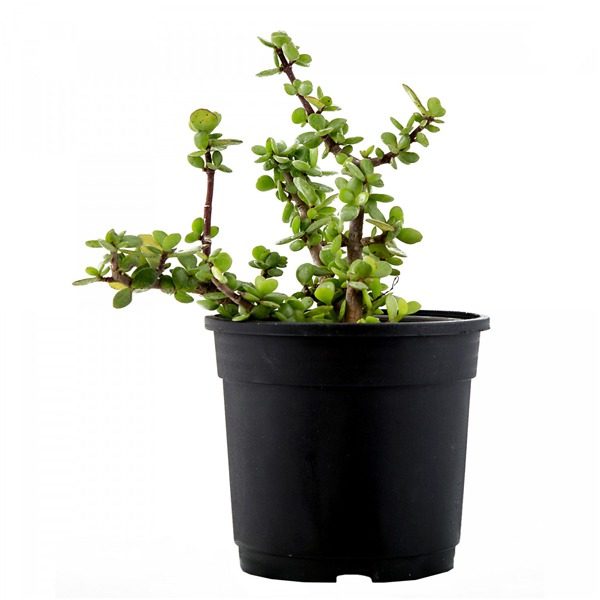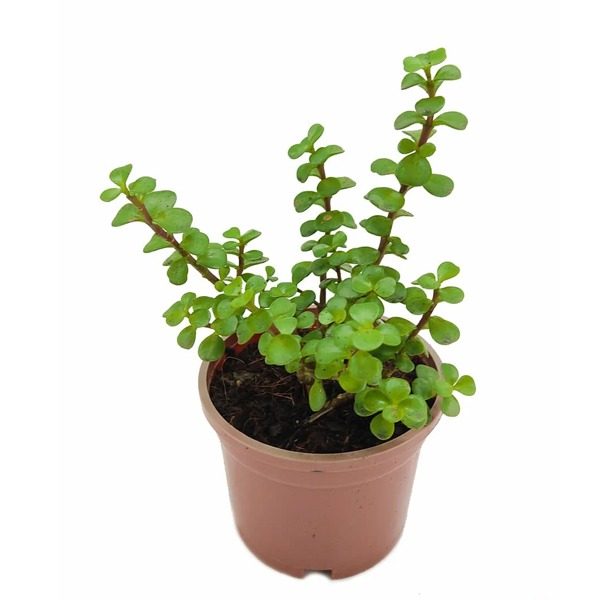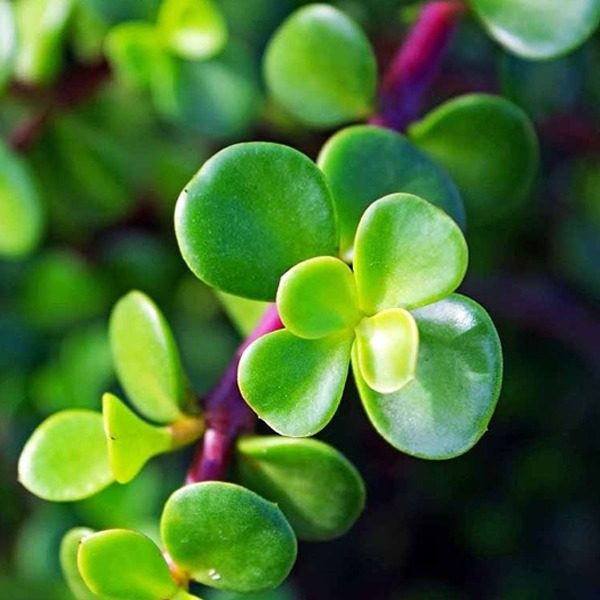


Mera Baghicha
Jade Plant
The Elephant Bush (Portulacaria afra), also known as the “Dwarf Jade Plant,” is a versatile and easy-to-care-for succulent
- Shipping ₹65 for entire order
- Dispatch in 5-7 days
- Country of origin: India

Description
Instructions
Care
Benefits
Description
The Elephant Bush (Portulacaria afra), also known as the “Dwarf Jade Plant,” is a versatile and easy-to-care-for succulent that makes a beautiful addition to both indoor and outdoor gardens. Its small, glossy leaves and trailing growth habit make it an attractive choice for containers, hanging baskets, and as a bonsai specimen.
Instructions
Light Requirements
- Indoors: Place your Elephant Bush in a bright location with indirect sunlight. It can tolerate lower light levels but will thrive and grow more vigorously in bright, indirect light.
- Outdoors: If grown outdoors, the Elephant Bush prefers partial shade to full sun. Avoid exposing it to harsh, direct midday sun, which can scorch the leaves.
Watering
- Frequency: Water your Elephant Bush thoroughly when the top inch of soil feels dry to the touch. During the growing season (spring and summer), it may need watering once every 1-2 weeks. Reduce watering frequency in the fall and winter when the plant is dormant.
- Method: Ensure the pot has good drainage to prevent water from pooling at the bottom, which can lead to root rot. Allow excess water to drain away completely after watering.
Soil
- Use a well-draining succulent or cactus potting mix. You can also make your own mix by combining regular potting soil with sand or perlite to improve drainage.
Care
Temperature and Humidity
- Temperature: The Elephant Bush prefers temperatures between 65-80°F (18-27°C) during the day and slightly cooler at night. It is not frost-tolerant and should be brought indoors if temperatures drop below 50°F (10°C).
- Humidity: This plant can tolerate a range of humidity levels but prefers a dry environment. Avoid placing it in overly humid areas.
Fertilization
- Feed your Elephant Bush with a balanced, water-soluble fertilizer diluted to half strength once a month during the growing season (spring and summer). Do not fertilize in the fall and winter when the plant is not actively growing.
Benefits
Pruning and Propagation
- Pruning: Regular pruning helps maintain the plant’s shape and encourages bushier growth. Trim back leggy stems and remove any dead or damaged leaves.
- Propagation: The Elephant Bush can be easily propagated from stem cuttings. Allow the cut end to dry and callous over for a few days before planting it in well-draining soil. Keep the soil slightly moist until the cutting roots, then follow regular care instructions.
Pests and Problems
- Pests: Watch for common pests such as mealybugs and spider mites. If infestations occur, treat with insecticidal soap or neem oil.
- Problems: Overwatering is the most common problem, leading to root rot. Ensure the soil is dry before watering again, and use pots with good drainage.
